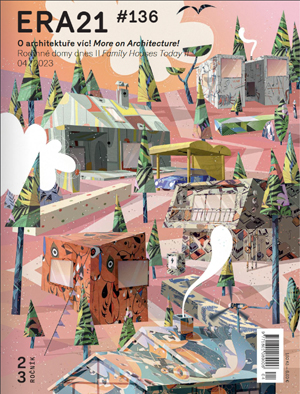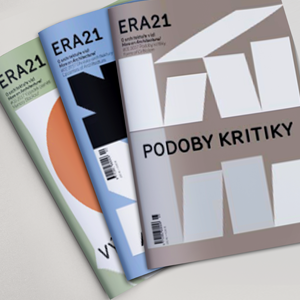The apartment building aims to naturally fit into the street front of Koněvova Street in Prague-Žižkov and blend in smoothly with the surroundings. Its character reflects the now disappearing spirit of the Žižkov development with a loose bohemian atmosphere. It might appear a bit retro, but the aim is for it to be contemporary. The plot size for the project was that of two or three typical old apartment buildings in Žižkov. For this reason, the building is divided into two identical volumes, optically differing in façade colors. The main asset of the site is a close proximity of Vítkov Park to the north and of the new bike path built in the place of the former railway tracks. Therefore, a passageway in the ground floor that connects Koněvova Street with the park plays a key role. It also fronts both parts of the building and shields its entrances from the busy road.
» entire articleIn February 2016, Brno became the first city in Czechia to launch a pilot project called Rapid Re-Housing, which is a fast form of accommodation for families with children in housing need. The first evaluation last autumn showed an extraordinary success rate and the project received a prestigious European award FEANTSA (European Federation of National Organizations Working with the Homeless) for providing the best housing solution for homeless people in EU in 2010–2017. We talked with Brno municipal representative Martin Freund about this social model, its implementation, and other plans in the domain of social housing.
» entire articleTěžko, stojíme na perónu a čekáme. Prý už sto let, a proto se teď musíme rozhodnout, kam s nádražím, co nejdříve. A přestože se svět změnil, mnozí v Brně s neotřesitelnou jistotou prosazují sto let starý nápad. Zatímco v první polovině minulého století byly kouřící vlaky nevítanou nutností a v té druhé se u nás většina takovýchto plánů nesla v megalomanském budovatelském duchu mimo vhodné měřítko...
» entire articleV neděli 25. března zemřel ve věku 91 let významný brněnský architekt, profesor Ivan Ruller. Poslední rozloučení se konalo ve středu 4. dubna v kostele sv. Augustina v Brně. S laskavým svolením profesora Vladimíra Šlapety jsme otiskli jeho smuteční řeč.
» entire articleDo you live in the country or in a city? Do you rent or do you own your property? Is it an apartment or a family house? What were the criteria defining your choice of housing type? Was it price, location, availability of jobs, schools, or forests? Or, was it instead the interest rates of mortgages, rising prices in selected locations, or conformity with the regime of a long time ago that secured you a position on the waiting list for an apartment...
» entire article

ERA21 vydává ERA Média, s. r. o. |
|
|
Phone: +420 530 500 801 E-mail: redakce@era21.cz |
|
| WEBdesign Kangaroo group, a.s. |